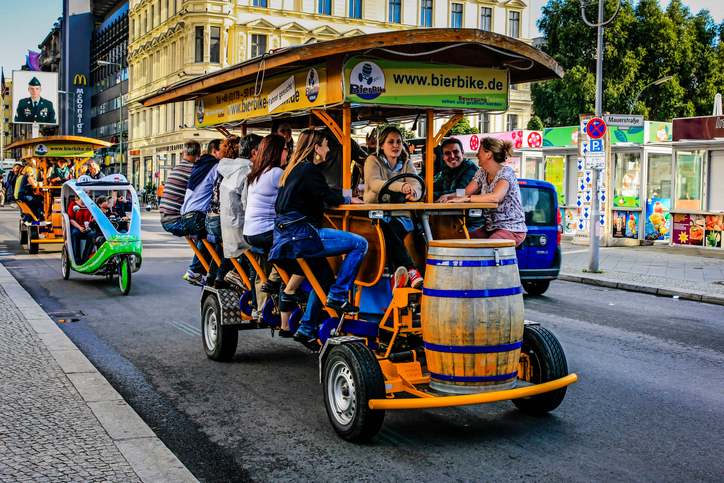Amsterdam unveiled far-reaching plans yesterday to rein in tourism, reflecting the dissatisfaction of many residents who feel the city’s historic centre has been overrun.
The leading Green-Left and other parties negotiating a new municipal government after March elections vowed to return “Balance to the City”, in a document of that name seen by Reuters.
“The positive sides of tourism such as employment and city revenues are being more and more overshadowed by the negative consequences” including trash and noise pollution, the document said.
Changes the document outlines include curtailing “amusement transportation” such as multi-person “beer bikes”; cracking down on alcohol use in boats on the canals; further restricting AirBnB and other home rentals; and a large tax hike.
The plans announced on Wednesday also include creating an inventory of all commercial beds in the city to try to cap various sectors such as those on cruise ships and in hotels.
“I’m very happy that the city is now finally taking action, because residents have been asking for it for a very long time,” said Bert Nap of neighbourhood organisation d’Oude Binnenstad, in the historic centre.
“What I’m worried about is that this package of measures is so drastic that there will be a lot of lawsuits and political resistance, which will cost a lot of time.”
He said the city was suffering from too many visitors in general, which had the effect of changing the character of the centre into one big tourist attraction. He also said some unruly, drunken tourists were making the city centre an unattractive place for local residents.
Edgy Lure
With a population of around 800,000, the city expects 18 million tourists in 2018, an increase of 20 percent from 2016 levels, many drawn by an edgy atmosphere generated by readily available soft drugs and the “red light” sex zone.
Anti-tourist and anti-expatriate sentiment have been steadily on the rise in Amsterdam, as both are blamed in part for helping drive housing prices increasingly out of the reach of ordinary Dutch people.
The average apartment in Amsterdam cost 407,000 euros ($475,000) in 2017, an increase of around 12 percent from 2016 levels, according to national real estate association NVM.
The change of emphasis has already started from national government over the past years, to try to dissuade visitors from the more earthy pastimes the city is famous for.
Advertising campaigns have focused on the city’s canals, the Anne Frank House and the museums packed with the greatest works of Van Gogh and Rembrandt.
Legislators have helped the re-branding, shutting a third of the city’s brothels in 2008 and starting a programme in 2011 to close marijuana cafes located near schools.
“Amsterdam is a city to live and work in – it’s only a tourist destination in the second place,” the municipal document said.






